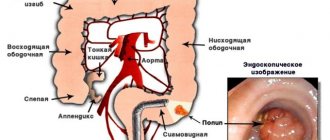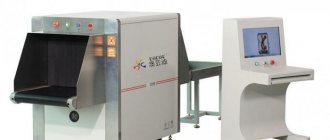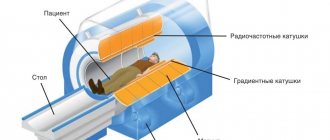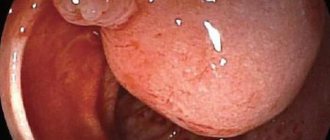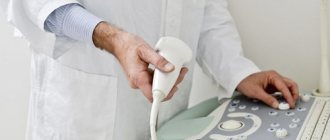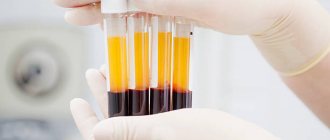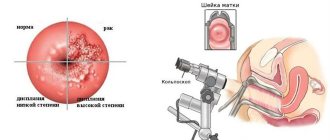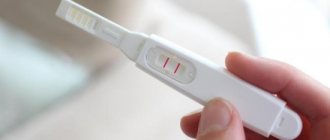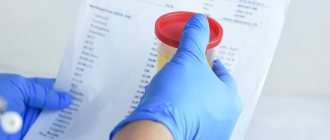Endoscopy is a method of diagnosing internal organs using a special flexible tube and digital camera without surgical intervention. An endoscopist is a medical specialist who has a higher medical education and has completed courses in the specialty “endoscopy” and is fluent in using a computer and the equipment adjacent to it, in this case.
A doctor of this specialization does not engage in independent treatment, but only carries out diagnostics and procedures prescribed by the attending physician. The work uses an endoscope (a flexible tube of a certain length with a lens installed at the end). The image obtained from the endoscope is displayed on the monitor, after which the doctor can save the examination data on digital or paper media.
The work of a diagnostician allows one to diagnose the development of a pathological process at an early stage, which significantly increases the chances of a full recovery and helps prevent the development of complications.
What is the competence of an endoscopist?
Initially, endoscopic examination was used only for diagnostics; subsequently, the equipment was improved and began to be manufactured, designing special devices in it that made it possible to carry out certain manipulations. There are also devices for additional research, for example, with ultrasonic sensors.
This allows it to be used in almost all areas of medicine, so explain: “Who is this, an endoscopist?” definitely impossible. This specialization is needed by doctors of different specialties:
- gastroenterologists, for diseases of the gastrointestinal tract (fibrogastroduodenoscopy);
- gynecologists, for examination of the vagina and cervix (colposcopy), the uterine cavity (hysteroscopy), diagnostics of the fallopian tubes, ovaries (laparoscopy).
- urologists, for examination of the urethra, bladder (cystoscopy);
- proctologists, for diagnosing diseases of the rectum (sigmoidoscopy), large intestine (colonoscopy);
- arthrologists, orthopedists (arthroscopy);
- surgeons, to examine the abdominal organs (laparoscopy), chest cavity (thoracoscopy), and mediastinal organs (mediastinoscopy);
- pulmonologists, for examination and manipulation of the bronchi (bronchoscopy);
- cardiac surgeons, vascular surgery specialists for heart examination, diagnostic and therapeutic measures (installation of stents, removal of blood clots, heart surgery).
- diagnosticians, ultrasound specialists for transesophageal ultrasound, etc.
History of the profession
The development of endoscopy went through four periods associated with the invention and use of the endoscope. In 1806, F. Bozzini invented an apparatus for examining the rectum and uterus with candles as a light source. For 50 years, the invention was not appreciated by practitioners, and only in 1853, the founder of endoscopy, A. Desormeaux, introduced the device into use, improving it with a system of mirrors and an alcohol lamp.
In 1932, a semi-flexible lens endoscope (R. Schindler) was released, marking the beginning of the second period in the development of endoscopy - semi-flexible research. This period is characterized by a comprehensive study of the internal structure of the stomach and the beginning of intragastric photography. The third period coincides with the invention of the flexible fiber gastroscope (1958, B. Hirshovets) and is called fiber-optic. Such devices made it possible to study in detail the mucous membrane of the upper part of the digestive system, perform tissue biopsies and therapeutic manipulations.
Since 1981, the fourth electronic period of endoscopy has been developing, associated with the invention of charge coupling, which converts optical signals into electrical impulses. The electronic endoscope opened the era of digital technology, where video endoscopy became the basis for diagnosis and treatment. Now several doctors can simultaneously monitor the condition of an organ and store research data on a computer.
Now endoscopic retrograde cholangiopancreatography (ERCP), ultrasonography, and therapeutic endoscopy are developing rapidly.
B. Hirshovets created a flexible fibrogastroscope, which revolutionized endoscopy.
Complaints addressed to an endoscopist
Patients rarely go directly to an endoscopist. But if emergency medical care is required, the patient is immediately examined by an endoscopist. For example, in gastroenterology, patients with complaints of vomiting in the form of coffee grounds, tarry stools (melena), indicating gastric bleeding, require coagulation of bleeding vessels by FGDS.
What diseases does an endoscopist diagnose?
Endoscopic examination makes it possible to identify changes and pathologies of organs, but a diagnosis can only be made by having a complete picture of the pathological process. The doctor describes the condition of the mucous membranes, indicates the presence and location of defects.
So with FGDS you can find:
- dilation of the veins of the esophagus;
- hyperemia of the mucous membrane;
- erosions, ulcers, polyps, tumors;
- deformation, stenosis of the esophagus, pyloric region;
- bleeding from damaged vessels and much more.
The data obtained by the endoscopist is considered taking into account the anamnesis, complaints, and other tests, and only after that a diagnosis is made.
What diseases does an endoscopist treat?
Using endoscopic intervention:
- stop internal bleeding in the gastrointestinal tract and abdominal cavity;
- suturing perforations in the esophagus for peptic ulcers;
- remove benign and malignant tumors (polyps in the uterus);
- dissect adhesions in the uterus and abdominal cavity;
- remove foreign bodies from the respiratory tract in pediatric otolaryngology and gastroenterology;
- deliver and install stents to restore patency of the esophagus and blood vessels;
- medications are administered for local effect.
Some of these procedures are performed only in special centers in Moscow, by endoscopists who have special skills and experience in performing such procedures.
How to become an endoscopist
To become an endoscopist, you need:
- Graduate from a university with a degree in General Medicine or Pediatrics.
- Receive an accreditation sheet: pass an exam and be interviewed by a special commission consisting of doctors of science and professors. Then you can work independently at an outpatient or clinic appointment.
- To obtain a narrow specialization, you can enroll in residency (2 years of study) in the specialty “Endoscopy”. It’s easier to pay, because The competition is small and for admission you only need 50 certification points. You can get into residency for free in two ways: through a competition on a general basis or through a targeted referral from the chief physician of a medical organization in which the specialist is already working.
Every year, doctors are required to score 50 certification points. To do this, you can take advanced training courses (36 points), attend scientific and practical conferences (the number of points depends on the event, but usually about 10 points), publish scientific papers, write books, defend dissertations. If you have collected enough points, you can work in your specialty for the next year. If the points are not scored, then you will have to either stop practicing medicine or solve this problem in “non-standard” ways.
Learn more about accreditation and internship cancellation.
The growth of professionalism, level of knowledge and experience of a doctor is usually reflected by the qualification category. All categories are assigned by a qualification commission in the presence of the doctor himself, based on his written research work containing a description of skills and knowledge.
Assignment deadlines:
- more than 3 years of experience – second category;
- more than 7 years – first;
- more than 10 years - highest.
A doctor has the right not to qualify, but this will be a disadvantage for career growth.
Career and professional growth is also facilitated by scientific activity - writing candidate and doctoral dissertations, publications in medical journals, speaking at conferences and congresses.
What are the main types of diagnostics usually performed by an endoscopist?
During an endoscopic examination, the doctor uses the following diagnostic methods:
- examine for the purpose of diagnosis the mucous membranes of individual organs, joint cavities, etc.;
- perform a puncture biopsy of suspicious areas and detected tumors;
- scrapings of the mucous membrane are made for cytological examination (in gynecology);
- samples of gastric and duodenal contents are taken.
The endoscopist also does some tests, for example, chromoscopy, staining the mucous membranes with methylene blue and other drugs, which helps determine the relief of the mucous membrane, microdamage, and damage to cancer cells.
Preparing for examination by an endoscopist
Depending on the location and purpose of the study, the following preparation may be prescribed:
- If the procedure is performed under anesthesia, the patient should not eat 5-6 hours before the examination.
- During colonoscopy and diagnostic laparoscopy, bowel movement may be prescribed using a cleansing enema the night before the procedure and 1-2 hours before it in the morning. In some cases, bowel cleansing is carried out using special drugs.
- In some cases, the patient should follow a diet for 2-3 days. Easily digestible products that do not cause increased gas formation are recommended. Spicy, fatty foods, fresh vegetables and fruits, legumes, carbonated drinks, and alcohol should be excluded.
- Before the procedure, the doctor sometimes prescribes sedatives that calm the patient and allow the examination to be carried out calmly.
The doctor will tell you in more detail about the necessary preparation before the examination.
Methodology, contraindications, preparation
Endoscopy is usually performed under local anesthesia or intramuscular injection of antispasmodics and analgesics.
Given the rapid development of technology, today contraindications include:
- severe general condition of the patient, psychomotor agitation or inadequacy of the patient, however, the procedure in such cases can be carried out using general anesthesia (anesthesia);
- abnormal growths, pathological changes in organs that prevent the endoscope from passing inside the organ (tumor growths or polyps, deformities of the bones of the spine or pelvis, ulcers that can be damaged during endoscopic surgery).
If there are contraindications, the gastroenterologist decides to refuse endoscopic examination.
A contraindication is essentially any condition in which injury to the patient, as well as damage to equipment, is possible.
Preparation for endoscopic examinations usually comes down to clearing the hollow organs of contents that may interfere with the examination. For example, for fibrogastroduadenoscopy, it is enough not to eat in the morning; for colonoscopy, you need to use cleansing enemas.
Features of an appointment with an endoscopist
The examination performed by an endoscopist is different from that of other doctors. After collecting anamnesis and clarifying the patient’s complaints, an examination is carried out using an endoscope. The flexible hose of the device is inserted through natural openings (mouth, rectum). To prevent the patient from experiencing discomfort, the mucous membrane is anesthetized with lidocaine. If the patient is restless, sedation or general anesthesia is possible.
In some cases, when it is necessary to examine internal organs, the diagnostic procedure is carried out in an operating room, through small incisions under anesthesia.
Advice from an endoscopist
Endoscopists advise not to neglect endoscopic examination, since it is an informative diagnostic method, especially for diseases of the gastrointestinal tract. Patients with peptic ulcers should undergo it regularly. There is no need to be afraid, as the examination is almost painless. In many clinics, it is performed under intravenous anesthesia.
A consultation with an endoscopist may be required to clarify the diagnosis, take a biopsy, perform some manipulations, or perform minimally invasive surgical interventions. A good endoscopist can not only diagnose the disease, but in many cases eliminate its complications.
Advantages and disadvantages
Endoscopy is a young science. Therefore, specialists in this field are in great demand in medical organizations, both public and private. The right to choose a place of work remains with the physician.
Speaking about the disadvantages of the profession, there are several. Patients are not only afraid of an endoscopist, but they do not like them. After all, the doctor, although for the benefit of the patient, carries out unpleasant manipulations. Often in practice, a specialist finds himself in stressful situations. And working with different biological fluids will not bring pleasure to everyone.
